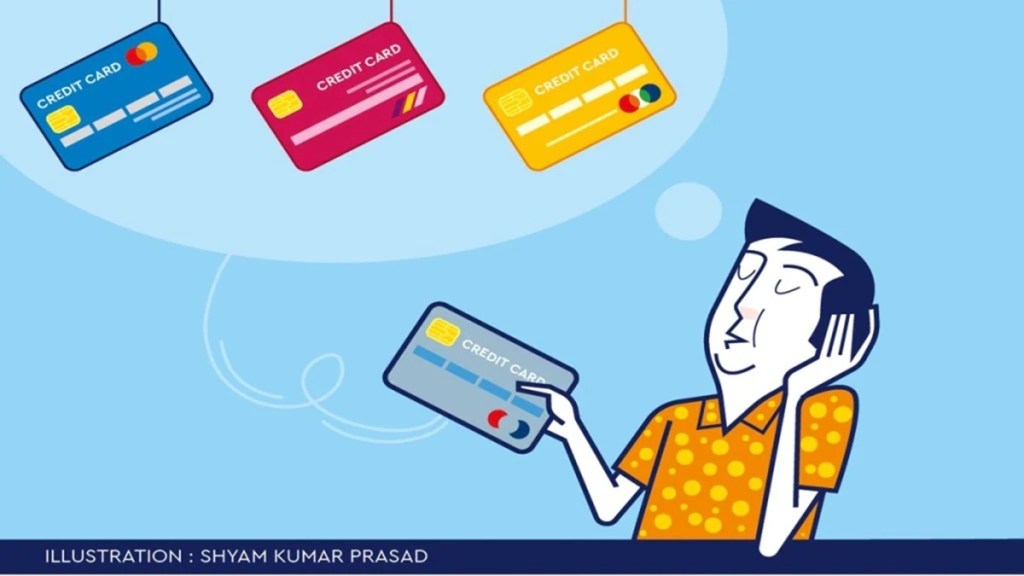Most of us have experienced this many times – when the credit card bill comes and we look at the total amount due, we are surprised. Since the bill period covers 30 days, by the time it reaches our email, we often forget the transactions we made at the beginning of the cycle. So when the bill arrives, we wonder, ‘How is the amount so high? Did I really spend that much?”
But once we open the statement and go through the transactions one by one, everything starts to make sense. We recognise each entry and realise that yes, we did make all those purchases. Then comes the tempting offer from the credit card company – you can either pay the full amount or just the minimum amount due. And this is where many of us get trapped. By nature, paying only the minimum feels easier, and we convince ourselves that we’ll clear the remaining balance next month — and that’s how the debt trap begins.
Initially, everything seems fine — no late fees, just some interest. But after a few months, when your income doesn’t allow you to clear the growing balance, the interest and charges start piling up. Soon, you notice your outstanding amount increasing instead of reducing.
And this is the story of millions of us. It isn’t unique to you — countless cardholders fall into the same pattern. But remember, this small habit can easily turn into one of the most expensive mistakes.
Why fall for the “minimum due” trap?
“Minimum due” is the minimum amount the credit card company tells you to pay to avoid default and the bank from imposing a late penalty. It’s typically around 5% of the total outstanding balance. But some banks have revised their ‘minimum due’ policy and now charge using a different revised formula. But the real expense comes from this – when you pay only this amount, the bank charges high interest on the remaining balance. So, in India, the interest rates on credit card balance may range between 35–40% per annum.
This means you’re paying interest every day, and this interest accumulates over time, increasing the balance. Small monthly payments don’t reduce the principal as quickly as the interest rate. Thus, this approach becomes a “debt trap” in the long run.
Balance transfer: Relief, but with conditions
If your balance has piled up and you’re wondering over your options, then there’s the “balance transfer” option. This allows you to transfer your expensive card balance to another bank or a new card scheme — where the interest rate is lower or there’s a 0% promotional offer.
For example, banks offer 0% or very low interest for 3–6 months. But the important thing is that this option incurs a transfer fee (1–3% or sometimes 3–5%), and after the promotional period ends, the old or higher rate may apply.
If you don’t pay the full amount within this period, the fees and high interest can ultimately prove more costly. Therefore, a balance transfer is a kind of “buying time”, and it is helpful only if used wisely.
Cash withdrawals and hidden expenses: Small mistakes, big burdens
Many people withdraw cash from their credit cards (cash advances). Withdrawing funds on credit cards seems like instant relief, but the ugly truth comes later. The bank charges interest immediately, without a grace period. A cash advance fee of 2.5–3% is also charged. Other ATM or bank fees also add up.
This means that within a few days, you’ll end up spending far more than the initial Rs 1,000. Therefore, withdrawing cash isn’t as safe as it may seem.
Late fees, credit scores, and rising costs
If you don’t pay your minimum dues, the bank charges a late payment fee — which can range from Rs 100 to Rs 1,200 or more. Repeated delays not only result in increased penalties but also lower your credit score. A weak credit score can make it difficult to obtain future loans or increase your card limit. This can lead to expensive borrowing.
Conclusion — When to choose?
If the balance is small and you can pay it off next month, paying the minimum due may be a temporary solution. But it’s better to pay the full amount sooner. If the balance is large and you can make a repayment plan, a balance Transfer is a better option, provided you understand the terms.
Avoid both cash withdrawals and increasing spending on the new card. Carefully understand the APR, fees, and promo period before accepting the offer.
Set up auto-debit or payment reminders to ensure timely payments are made.
Finally, simply paying the minimum due is an option you often forget to consider. It’s not a solution, but a time-consuming machine. High interest rates and compounding slowly eat away at your balance. Balance transfers, on the other hand, offer the opportunity to save, but with conditions, and the responsibility to repay on time. Credit cards can be a tool of convenience, provided you use them with purpose and discipline.


